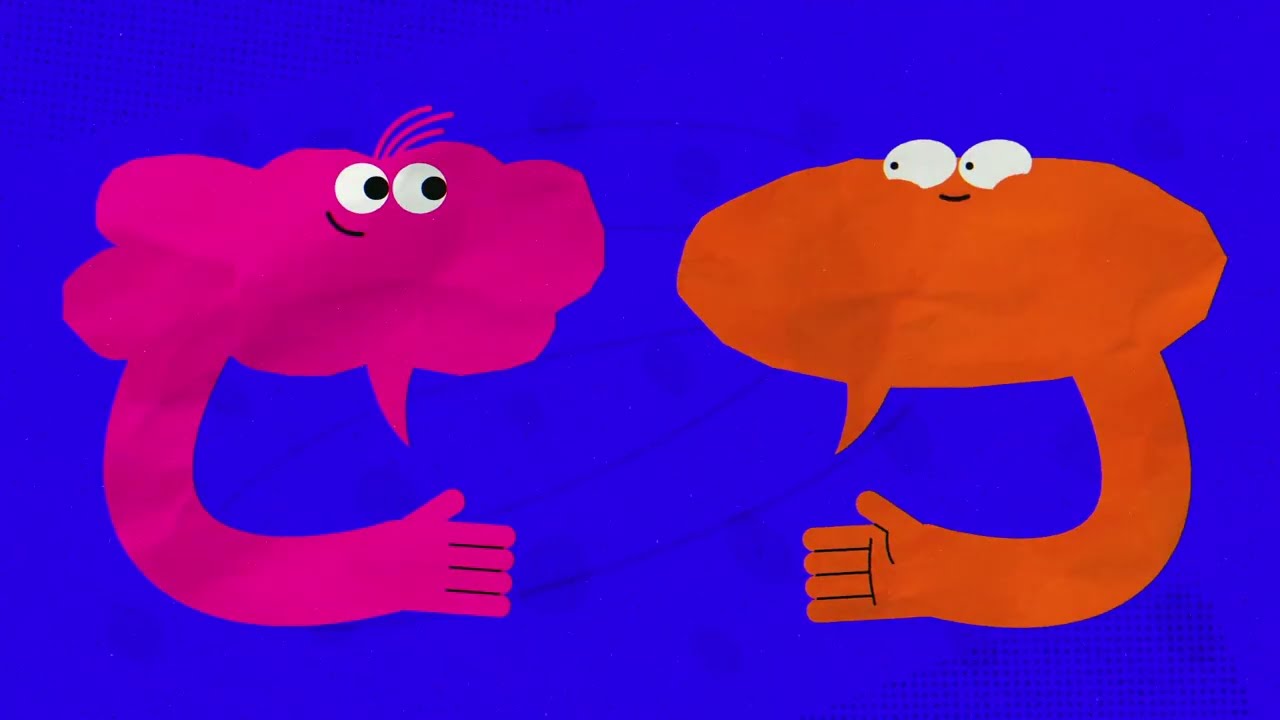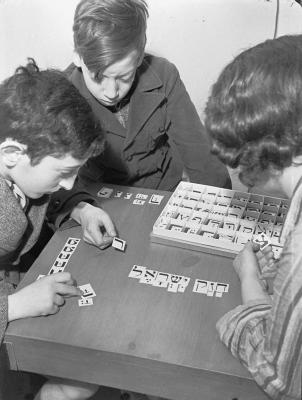What Are Mini-Lessons?
Mini-lessons last between 3 and 30 minutes. Each mini-lesson includes pedagogical tips under “tips for teachers” on the right side. The icons indicate the types of interaction students will engage in and your role as the teacher. You’ll find the QR code or link to share with your class at the bottom.
Discussion
Students discuss and share personal experiences. This may evoke emotional responses.
22 Letters
Take a Closer Look!
When and where did Hebrew originate? Watch the video to find out.

This is Hebrew
בתמונה רואים ילדים בברלין לומדים עברית עם משחק ב-1934
This is Hebrew. The Hebrew translates as: “The picture shows children in Berlin learning Hebrew with a game in 1934.” At the time, very few Jews in Germany used Hebrew as a spoken language, but they did sing in the language at synagogue during the holidays and study sacred texts in the original Hebrew.

Children learning Hebrew using alphabet tiles1
Word Puzzle
This photo highlights a unique feature of the Hebrew alphabet. Can you guess what it is? Find out by trying to read this text.
HY, WNT T LRN HBRW? THN Y HV T FLL N TH VWLS N YR HD. HV FN!
What is present in the photo but missing from the text?
Names in Hebrew
Here are five names written in both the Latin alphabet and the אָלֶף־בֵּית עִבְרִי (Hebrew alef-bet). Look at the names and match the pairs. Use the chart your teacher provided you as a guide.
Provide This Mini-Lesson to Students
Simply share the mini-lesson with your class using the QR code or link provided.


Go to the module Hebrew, which includes this mini-lesson.
To the module